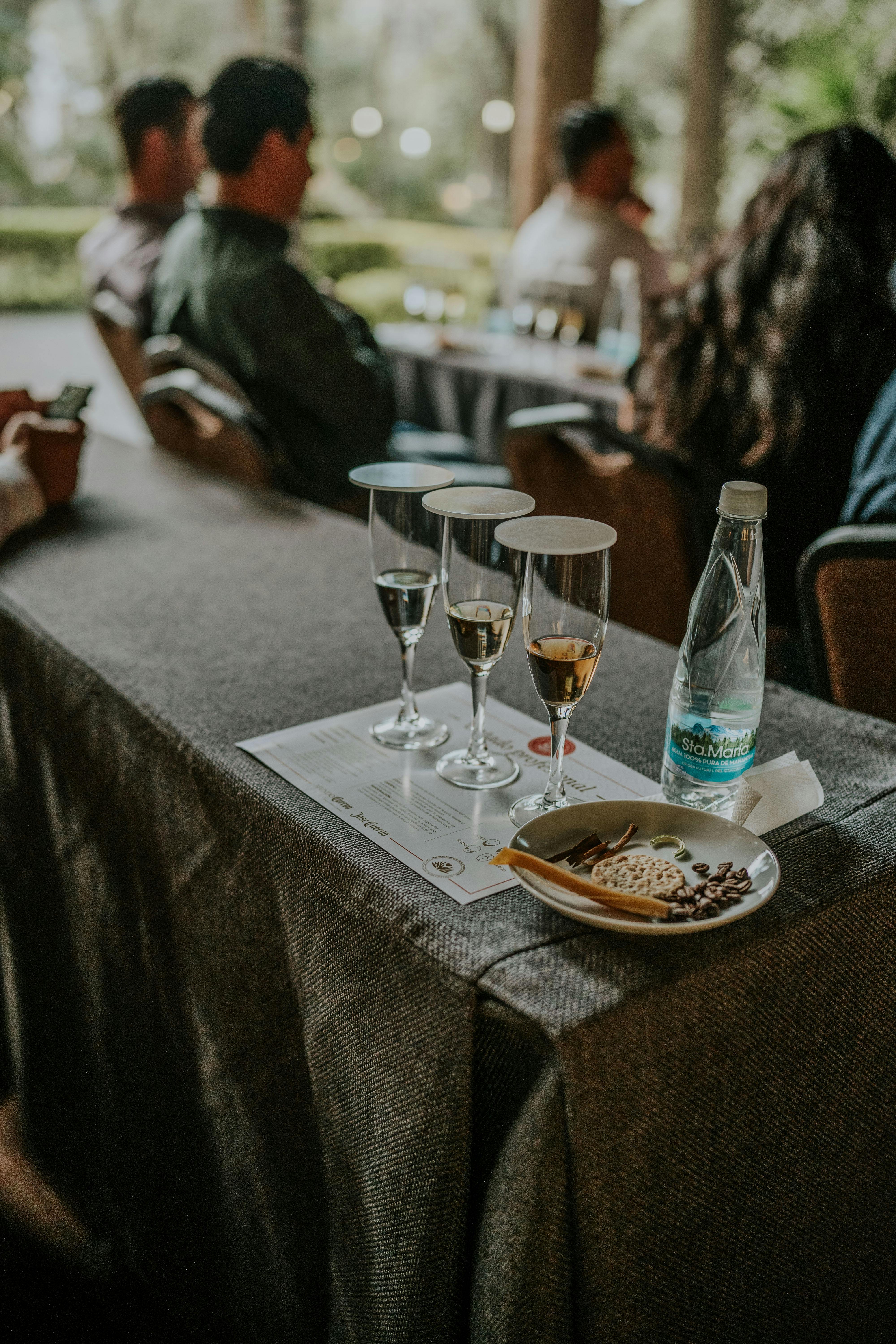Sparkling wine and regular wine may both be drinks made from fermented grapes, but their differences lie in their unique characteristics. The main distinguishing factor is the presence of carbon dioxide in sparkling wine, which creates the effervescence and delightful bubbles that make it so distinctive. Regular wine, on the other hand, does not have this carbonation, resulting in a still and smoother texture. Additionally, while regular wine is typically enjoyed on its own or paired with food, sparkling wine is often associated with celebratory occasions and is known for its refreshing and festive qualities. So, whether you choose to enjoy a glass of regular wine or raise a flute of sparkling wine to toast, each offers its own delightful experience.
Production Method
Traditional Method
The traditional method, also known as the Champagne method or méthode champenoise, is the most labor-intensive and time-consuming way to produce sparkling wine. In this method, the secondary fermentation, which creates the bubbles, takes place inside the bottle. After the initial fermentation, a mixture of yeast and sugar, known as the tirage, is added to the base wine. The wine is then sealed with a crown cap and left to undergo a slow secondary fermentation in the bottle. This process can take months or even years, allowing for the development of complex flavors and aromas. Once fermentation is complete, the spent yeast cells, called lees, are removed through a process called riddling. The bottle is then topped up with a small amount of liqueur d’expédition, a mixture of wine and sugar, to balance the acidity and sweetness. Finally, the bottle is corked and aged for a further period before being released for sale.
Charmat Method
The Charmat method, also known as the tank method or cuve close, is a more efficient and cost-effective way to produce sparkling wine. In this method, the secondary fermentation takes place in large pressurized tanks, rather than individual bottles. After the initial fermentation, the base wine is transferred to the tank along with the tirage, consisting of yeast and sugar. The tank is then sealed and pressurized, allowing the secondary fermentation to occur. The wine is left to ferment under pressure for a shorter period compared to the traditional method, typically a few weeks. Once the fermentation is complete, the wine is chilled and filtered to remove the yeast cells. A dosage, a small amount of wine and sugar, is added to adjust the sweetness before the wine is bottled under pressure. This method is often used for producing sparkling wines with a fresher and fruitier profile, as it preserves more of the primary fruit flavors.
Transfer Method
The transfer method is a hybrid between the traditional method and the Charmat method. In this method, the secondary fermentation takes place in the bottle, similar to the traditional method, but the wine is then transferred to a pressurized tank to remove the lees and add the dosage. This method allows for a more efficient removal of the lees compared to the traditional method, as multiple bottles can be emptied into the tank at once. The wine is then bottled under pressure, preserving its effervescence. The transfer method is often used by smaller producers who want to achieve the complexity and depth of flavors associated with the traditional method, while still maintaining some efficiency in production.
Carbonation
Naturally Carbonated
Naturally carbonated sparkling wines, also known as pet-nats (short for pétillant-naturel), undergo a single fermentation process. In this method, the fermentation is not completely finished before bottling, allowing the remaining sugars and yeast to continue the fermentation in the bottle. This results in a natural carbonation, created by the carbon dioxide produced during fermentation. These wines tend to have a more rustic and unfiltered character, with lively bubbles and a unique flavor profile. Natural carbonation can also be achieved through the ancestral method, a similar technique where the wine is bottled before fermentation is complete.
Artificially Carbonated
Artificially carbonated sparkling wines, also known as carbonated or gasified wines, undergo a two-step process to introduce the bubbles. The base wine is first fermented until dry, with all the sugars converted into alcohol. Then, carbon dioxide gas is injected into the wine under pressure, creating the bubbles. Unlike naturally carbonated wines, where the bubbles are created through fermentation in the bottle, artificial carbonation allows for greater control over the level of carbonation and consistency in the bubbles. This method is often used for producing sparkling wines with a more approachable and consistent style, as well as for other sparkling beverages like soda or tonic water.

Taste and Flavor
Bubbles and Effervescence
The bubbles in sparkling wine play a crucial role in its taste and flavor profile. They contribute to the mouthfeel, creating a sensation of lightness and effervescence. The size and persistence of the bubbles can vary depending on the production method and aging. Wines produced using the traditional method tend to have smaller, more delicate bubbles that gently rise to the surface, while those produced using the Charmat method may have larger, more vigorous bubbles. The bubbles can also influence the aromas and flavors of the wine, as they release volatile compounds that enhance the perception of fruitiness and freshness.
Acidity and Sweetness
Sparkling wines often display a refreshing level of acidity, which helps to balance the sweetness and maintain a crisp and lively character. The acidity can vary depending on factors such as grape variety, climate, and winemaking techniques. Some sparkling wines, especially those produced in cooler climate regions, may have higher levels of acidity, providing a zesty and vibrant taste. The sweetness of sparkling wine can range from bone-dry, with no residual sugar, to sweet and dessert-like. The level of sweetness is typically determined by the residual sugar left after fermentation or the addition of a dosage during the winemaking process. Consequently, sparkling wines offer a wide range of taste profiles, from bone-dry and crisp to lusciously sweet.
Appearance
Color and Clarity
The color of sparkling wine can vary depending on the grape variety used, as well as the production method and aging. Sparkling wines made from white grape varieties, such as Chardonnay or Pinot Blanc, often have a pale yellow or straw-like color. On the other hand, sparkling wines made from red grape varieties, such as Pinot Noir or Gamay, can have a slightly deeper hue, ranging from salmon pink to ruby red. Additionally, rosé sparkling wines, produced by allowing the grape skins to macerate with the juice for a short period, exhibit a range of pink tones. Clarity in sparkling wine is highly valued, and winemakers employ various techniques, such as fining and filtration, to achieve a crystal-clear appearance.
Bubbles and Mousse
The bubbles of sparkling wine are not only important for taste but also for visual appeal. The effervescence in the glass is created by the carbon dioxide released during fermentation or artificially injected into the wine. As the bubbles rise to the surface, they form a frothy layer known as mousse. The quality and persistence of the mousse can be indicative of the wine’s age and production method. Wines with a fine and persistent mousse are often associated with higher quality and careful aging. The sight of the bubbles dancing in the glass and the creamy mousse can add to the overall sensory experience of enjoying a glass of sparkling wine.

Aging Potential
Shorter Aging Period
Some sparkling wines, particularly those made using the Charmat method or artificial carbonation, are meant to be enjoyed in their youth. These wines are generally produced to showcase the vibrant and fruity flavors of the base wine. They do not require extensive aging and are released into the market earlier. These youthful sparkling wines are perfect for immediate consumption, delivering a fresh and lively profile bursting with primary fruit aromas and flavors. They are ideal for casual gatherings or as an aperitif before a meal.
Longer Aging Period
On the other hand, sparkling wines made using the traditional or transfer method are often designed for longer aging. The extended period of aging allows the wine to develop complex flavors and aromas, as well as a more refined mousse. During this aging process, the wine interacts with the lees, which impart desirable autolytic characteristics, such as brioche or toast-like flavors. These aged sparkling wines can display greater depth, elegance, and sophistication. They are often sought after for special occasions or for those who appreciate the complexity that comes with maturity.
Serving Temperature
Cooler Temperature
Sparkling wine is generally served chilled, as the cooler temperature enhances the sensory experience and preserves its freshness. Cooler temperatures help to accentuate the acidity, making the wine crisper and more refreshing on the palate. It also helps to retain the effervescence of the bubbles, ensuring a lively and invigorating sensation. The ideal serving temperature for most sparkling wines is between 45°F (7°C) and 50°F (10°C), which can be achieved by placing the bottle in a refrigerator for a few hours before serving. Cooler temperatures are particularly suitable for younger, fruit-driven sparkling wines that benefit from their vibrant and zesty character.
Warmer Temperature
In some cases, serving sparkling wine at a slightly warmer temperature can enhance its aromas and flavors. Warmer temperatures can help to release more volatile compounds, allowing the aroma profile to become more pronounced. The ideal serving temperature for this approach is between 55°F (13°C) and 60°F (16°C), which can be achieved by allowing the bottle to rest at room temperature for a short period before serving. Warmer temperatures are often recommended for more complex and aged sparkling wines, as it allows their secondary aromas, derived from the aging process, to unfold and be fully appreciated.

Food Pairing
Versatility with Food
sparkling wine’s versatility makes it an excellent choice for pairing with a wide range of foods. Its acidity and effervescence act as palate cleansers, making it an ideal accompaniment to various dishes. Sparkling wine can complement delicate seafood like oysters or scallops by cutting through their richness and providing a refreshing contrast. Its effervescence can also counterbalance the saltiness and richness of fried foods or charcuterie. In addition, sparkling wine’s acidity and bubbles make it an excellent counterpoint to creamy or buttery dishes, balancing their flavors and textures.
Specific Food Pairings
While sparkling wine is versatile with many dishes, certain pairings are particularly complementary. For example, Champagne, a traditional method sparkling wine, is often paired with caviar or smoked salmon for an elegant and indulgent combination. The acidity and complexity of Champagne can also pair well with rich, creamy cheeses like Brie or Camembert. On the other hand, the bright and fruity expressions of sparkling wines produced using the Charmat method can harmonize with fruits, salads, or light desserts. For a refreshing and lively combination, pairing sparkling wine with fresh strawberries or citrus-based desserts can create a delightful contrast.
Occasions and Celebrations
Popularity for Celebrations
Sparkling wine is often associated with celebrations and special occasions. Its effervescence and celebratory nature make it a popular choice for toasting and raising a glass in commemoration. The sound of the popping cork and the lively bubbles can add a sense of festivity to any gathering. Sparkling wine’s versatility also makes it suitable for a range of celebrations, from weddings and anniversaries to birthdays and holidays. It is a beverage that brings people together, evoking a sense of joy and merriment.
Versatile for Different Occasions
Beyond the traditional celebrations, sparkling wine is also a versatile companion for various occasions. Its ability to pair well with a wide range of foods makes it suitable for both casual and formal gatherings. Whether it’s a picnic in the park, a brunch with friends, or a romantic dinner, sparkling wine can elevate the experience. Its effervescence and bright flavors bring a sense of liveliness and excitement to any occasion. The versatility of sparkling wine ensures that there is always a style or expression that suits the atmosphere and the preferences of those enjoying it.
Price Range
Variability in Price
Sparkling wine spans a wide range of prices, from affordable options to high-end luxury bottles. The price of sparkling wine can vary depending on factors such as the production method, grape variety, region, and brand reputation. Sparkling wines made using the traditional method tend to be more expensive due to the labor-intensive and time-consuming production process. On the other hand, sparkling wines produced using the Charmat method or artificial carbonation are often more affordable. The price range allows for accessibility, ensuring that there is a sparkling wine option for every budget and occasion.
Value for Money
While some sparkling wines may come with a higher price tag, they often deliver exceptional value for money. The craftsmanship, attention to detail, and aging potential associated with certain sparkling wines make them worthwhile investments. These wines offer a sensory experience that goes beyond just the liquid in the bottle. From the complex aromas and flavors to the delicate bubbles and elegant packaging, high-quality sparkling wines can provide a sense of luxury and indulgence. Additionally, lesser-known regions or producers may offer sparkling wines that punch above their price point, providing excellent value for those seeking quality without breaking the bank.
Varieties and Regions
Different Grape Varieties
Sparkling wine can be made from a variety of grape varieties, both white and red. Chardonnay, Pinot Noir, and Pinot Meunier are some of the most commonly used grape varieties in traditional method sparkling wines, particularly in the Champagne region of France. Chardonnay brings freshness and elegance, while Pinot Noir adds structure and fruity aromas. Pinot Meunier contributes to the blend with its roundness and approachability. However, sparkling wines are not limited to these grape varieties. Producers around the world experiment with different grape varieties, creating unique expressions. For example, Prosecco from Italy is made primarily from the Glera grape, which imparts floral and fruity characteristics.
Specific Sparkling Wine Regions
While sparkling wine is produced in various regions worldwide, certain regions have become renowned for their expertise and quality. Champagne, in northeastern France, is the epitome of traditional method sparkling wine production. Its cool climate and chalky soils provide ideal conditions for growing grapes with high acidity and complexity. The region has strict regulations to ensure quality and consistency in Champagne production. Other notable regions include the Franciacorta and Trentodoc regions in Italy, which produce traditional method sparkling wines using local grape varieties. The Finger Lakes region in New York has also gained recognition for its cool-climate sparkling wines. Each region brings its unique terroir and winemaking traditions to the production of sparkling wine, resulting in diverse and exciting expressions.
Sparkling wine offers a joyful and effervescent experience, perfect for celebrations and special occasions. Its production methods contribute to distinctive flavors and aromas, while the type of carbonation affects the nature of the bubbles. The taste and flavor of sparkling wine present a balance between acidity and sweetness, providing a refreshing and tantalizing sensory experience. The appearance of sparkling wine, with its vibrant colors and lively bubbles, adds to its allure. The aging potential of sparkling wine varies, with some best enjoyed in their youth and others benefiting from aging. Serving temperatures influence the enjoyment of sparkling wine, with cooler temperatures accentuating freshness and warmer temperatures enhancing aromas. Sparkling wine’s versatility extends to food pairing, making it an excellent companion for various dishes. Whether for special occasions or casual gatherings, sparkling wine brings a sense of joy and celebration. Its price range offers options for every budget, with some delivering exceptional value for money. Finally, the wide range of grape varieties and regions producing sparkling wine ensures diversity and discovery. Whether you prefer the classic elegance of Champagne or the vibrant fruitiness of Prosecco, there is a sparkling wine to suit every palate.

Franco Deville, an esteemed wine connoisseur and author, is the visionary behind “Wines of Madeira.” His extensive background in viticulture and wine tasting enriches his detailed guide on Madeira wines. Franco’s dedication to traditional winemaking and innovative approaches has established him as an influential voice in the wine community.

